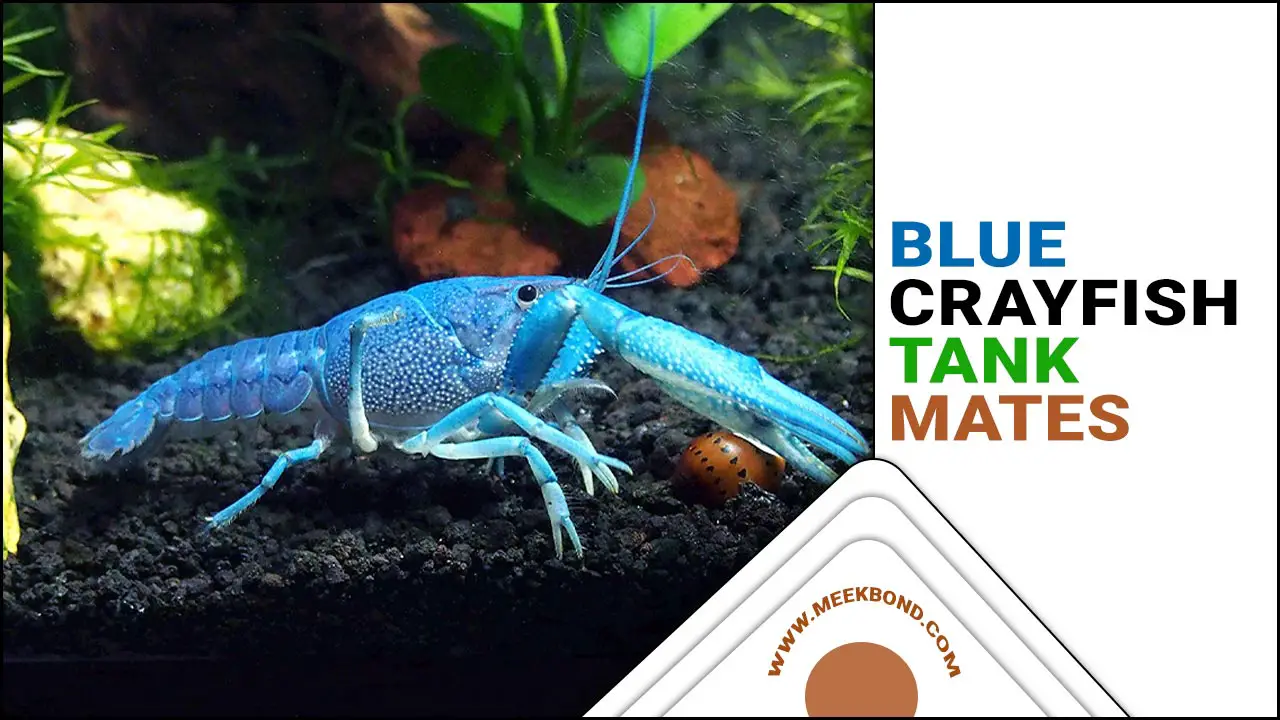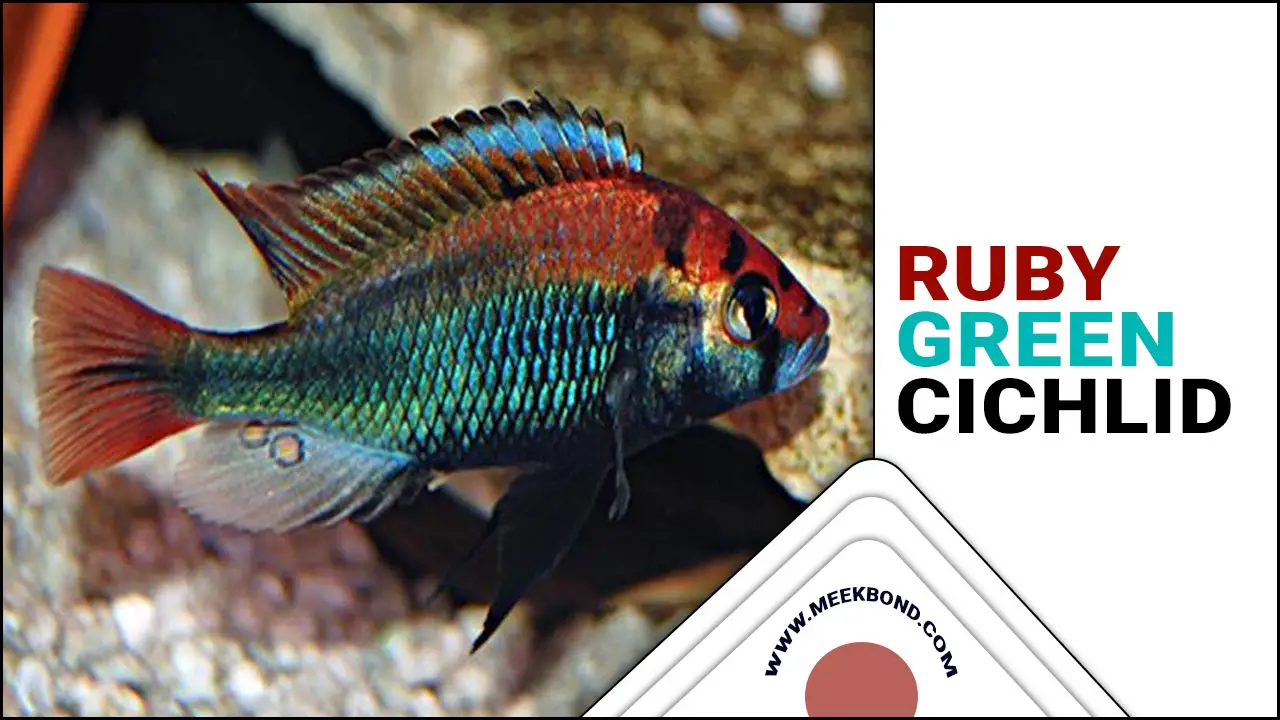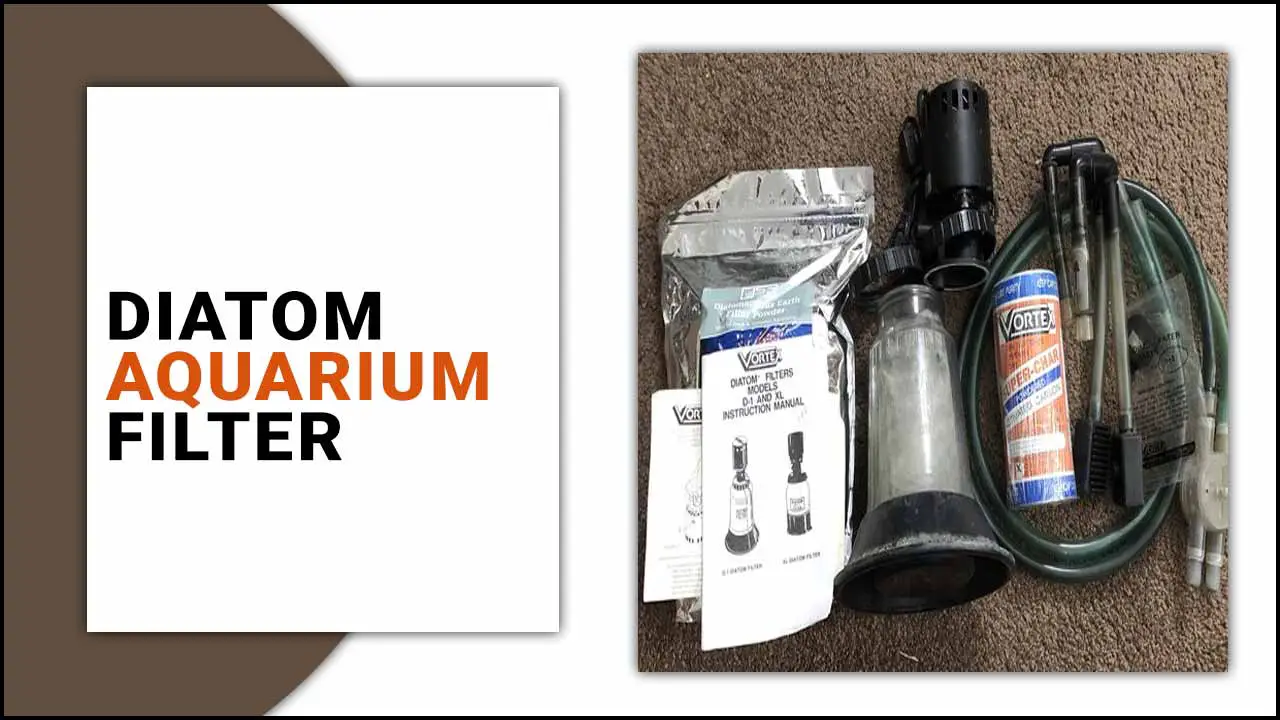If you’ve ever kept an aquarium, you’re probably familiar with diatoms – single-celled, algae-like organisms forming brown algae layers in new tank setups. While diatoms are easy to filter out and usually disappear on their own over time, they can be a nuisance and cause brown algae growth if left unchecked.
In this blog post, we’ll be taking a look at what diatoms are, how they form brown algae and the best way to get rid of them. We’ll also offer tips on how to remove brown algae from your aquarium permanently if necessary. So read on to learn everything you need to know about this common algae problem!

What is “Brown Algae”?
If you’re having trouble cleaning your fish tank of brown algae, you’re not alone. It’s a problem that can afflict even the most experienced aquarium hobbyists, so let’s take a look at what brown algae is and how to get rid of it.
Brown algae is a type of vegetation that can form in fish tanks and other water habitats. It’s actually quite simple to remove – just a matter of scrubbing it away with soap and water.
What Causes Brown Algae (Diatoms)?

Brown algae is a problem that can be difficult to get rid of, but with a little knowledge and effort, it can do it. Brown algae are caused by high levels of nitrates and phosphates in the water, which various factors can cause. To start, check the water quality and make sure there’s enough chlorine or oxygen present.
If that doesn’t work, you’ll need to use an algaecide to kill the algae cells directly. Once brown algae is gone, check your filter regularly to avoid future outbreaks.
Is Brown Algae Harmful?
Brown algae is a common nuisance in fish tanks, and it can be harmful to your fish. It’s also known as green water algae, and it’s green because of the high levels of chlorophyll in its cell wall. These algae can cause your fish to swim around in circles or eat less, creating an unpleasant odor.
There are several ways to get rid of brown algae, but the most effective is usually a combination of methods. If you’re unsuccessful in using one or more methods, it’s time to call an aquarium professional. Keep your tank clean and healthy by regularly monitoring the water quality and removing any debris that could contribute to brown algae growth.
How Do I Remove Brown Algae From My Aquarium?

Brown algae is a common problem in fish tanks, and it can be difficult to remove. If left unchecked, brown algae can quickly overgrow and block fish tanks. In order to get rid of brown algae:
- Try flushing the tank with freshwater first.
- If that doesn’t work, try using an algaecide or scrubbing agent. If that still fails, you may need to take your fish tank down for cleaning.
- Be prepared for this task, as it takes time and effort to get the algae out.
Once the tank is clean, be sure to keep it that way by following proper water filtration and tank maintenance guidelines.
By 6 Ways You Can Remove Brown Algae

It’s never too late to get your fish tank in great condition. Here are six easy methods for getting rid of brown algae:
1.Perform Water Changes

One of the best ways to get rid of brown algae is by performing water changes. By changing a majority of your tank’s water every two to three days, you will quickly clear up any algae growth. Make sure that the quality of fish food you are using helps promote healthy growth while reducing water change frequency.
Checking your pH levels and making necessary adjustments is also essential for keeping your aquarium clean and green-looking.
2.Removing Brown Algae From Tank Glass

Removing brown algae from tank glass is an important step in keeping your aquarium looking crystal clear and clean. You can use a few methods to get the job done quickly and easily. The most common way to remove algae is by using commercial algae killers or dishwashing soap.
If the algae are on the glass, you will need to scrub it with a hard brush and then rinse with water. If the algae is on the side of the tank, use a spray bottle and vinegar to clean it off. However, if the algae are embedded in gravel or soil, you will need to remove it using a vacuum cleaner and bucket method.
3.Removing Brown Algae From The Substrate

Brown algae is a common problem in aquariums and can quickly grow out of control. To remove it, start by making sure the water is clean. Only use fresh water to avoid adding pollutants or chlorine bleach which would kill other plants and fish.
To attack brown algae, use a chlorine bleach solution – add 1 tablespoon of chlorine to 8 gallons of water. Then slowly release the product into the tank over a period of days while maintaining an adequate flow rate through the filter; this will help keep your tank free from harmful algae growth runoff.
If brown algae seem to be resistant to treatment, you may need to resort to using an algaecide such as Algisure-B (containing copper sulfate), which will kill all types of green algae, including brown ones.
4.Removing Brown Algae From Fake Plants And Other Décor

Algae is a problem that can plague any plant, especially those in high-traffic areas such as homes or office spaces. It’s important to take preventative measures to keep algae growth at bay and ensure water clarity stays good. Here are five tips for removing brown algae from fake plants:
- Make sure the water quality is good – high levels of nitrates or ammonia will lead to algae growth.
- Check the pH level – if it is low, add some acidity to the tank.
- Get rid of any organic matter in the tank – this will help reduce algae growth and improve water clarity (through filtration).
4 . Use a clarifier to remove particles and chlorine to kill bacteria- use every two weeks during warmer months.
5 . Finally, add some salt to the tank- this will help discourage algae growth and improve water clarity
5.Improve Lighting

If you’re having trouble keeping your algae growth under control, increasing the light intensity of your aquarium might be a good way to go. Try using artificial light or a brighter aquarium lamp. Adding salt to the tank can also help create an acidic environment that inhibits algae growth.
You can also use algaecide products to kill the algae on contact. periodic water changes are another way to keep your tank clean and refreshed while avoiding over-watering, which can lead to root damage and disease in fish tanks
6.Eat Brown Algae

If brown algae starts to show up in your fish tank, it’s time to take action. You can try a few methods to get rid of the algae – eating, soaking or spraying. Make sure to do it regularly so that the algae doesn’t build up again. Keep an eye on your fish and make sure they’re getting enough food – if not, brown algae will come back again!
9 Ways to Prevent Brown Algae from Coming Back

Keeping your fish tank algae-free is essential for healthy fish and coral growth. You can do a few things to help keep algae at bay. Regular water changes will help to remove organic material and debris that can lead to algae growth. If algae is starting to form too quickly, you may want to consider using an algaecide or biological control product.
Be sure to keep the tank clean and free of excess light, inhibiting coral growth. Lastly, make sure your fish have access to fresh water at all times and monitor ammonia levels. Add compost or seaweed mix as needed if the tank’s pH levels change too much.
1.Increase Filtration

One way to prevent brown algae growth in fish tanks is by increasing filtration. This can be done by regularly cleaning gravel, water intake, and filter, as well as using a quality aquarium filter that can handle high levels of chlorine and ammonia.
2.Keep Up With Your Water Changes

Keeping up with water changes is the most important thing you can do to prevent brown algae growth. Change half of the water in a fish tank every two weeks, and change at least 80% of it weekly if using a filter. Also be sure to remove plants and gravel that might add extra nutrients or cause algae to grow faster. Test the pH of your tank on a regular basis, and adjust it as needed.
3.Increase Water Flow

One of the most common problems faced by fish owners is water flow. By adding a filter, raising the tank or using a cloudier water conditioner, you can help increase water flow and promote better aquarium conditions. May also add salt to the aquarium water to help keep algae growth under control and the pH level balanced.
4.Avoid Silicates
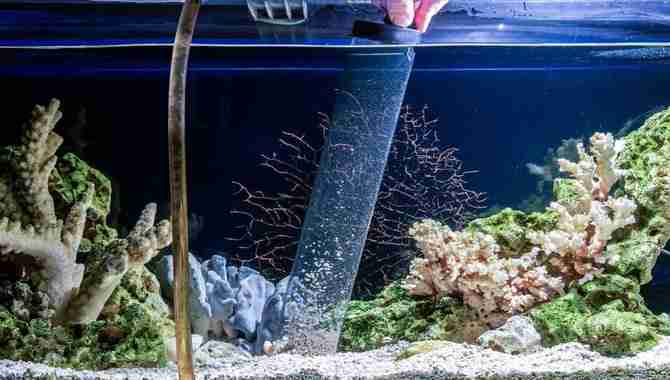
Brown algae are one of the most common problems fish tank owners face. This problem can be easily avoided by following these simple tips:
- – One of the best ways to reduce silicate levels in water is by adding plants.
- – Make sure to change the water regularly and use a green filter or salt lamp to eliminate excess silicate.
- – Avoid getting brown algae by monitoring water quality and adjusting aquarium settings as needed.
Additionally, gravel substrate over sand will help prevent this problem from occurring in the first place.
5.Avoid Overfeeding

This growth of unwanted algae can suffocate your fish and make it difficult for them to breathe. A balanced diet is essential for fish tanks – give them plenty of fresh water and food, but no more than they can eat in one go.
It’s also important to keep the tank clean by regularly cleaning the glass and filtration every week; this way, you’ll avoid having brown algae build up on any surfaces.
6.Use A UV Sterilizer

Brown algae is a problem that can develop in any tank, regardless of the water quality. It forms when water isn’t clear and has a greenish tint to it. This algae doesn’t just look bad; it can also cause fish health problems, make the tank look cloudy, and reduce oxygen levels in the water.
Use a UV sterilizer to prevent brown algae from forming and keep your aquarium looking beautiful all year round.
7.Use Reverse Osmosis (Ro) Water
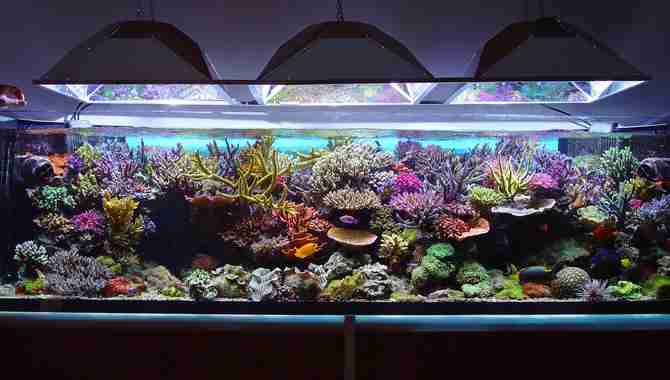
If you’re finding that your water source is not agreeing with your plants, it might be time to switch to water filtered through Reverse Osmosis. RO water is heavily salt and mineralized, which helps control algae growth. As a refresher, here are five of the most important reasons why adding salt to RO tank water can help keep algae at bay:
1) High levels of salt and minerals in RO water ensure that algae will not thrive.
2) Be sure to change your water every two weeks – this will help eliminate all the built-up salts before it causes problems for plants or equipment.
3) Keep an eye out for other signs of algae growth, such as slimy surfaces or unusual smells- if any of these developments occur, it’s best to change your tank immediately.
8.Chemical Filtration

Algae growth is a common problem that can be managed with the help of a chemical filtration system. This will remove unwanted algae and other types of bacteria from water, keeping it clear and healthy.
Chlorine and ammonia are two of the most commonly used chemicals in fish tank cleaning – make sure to change them regularly to prevent build-up or odor. Also, keep in mind that you will need enough room for your fish tank if you want it to work effectively; a large aquarium will do the trick.
9.Protein Skimmers

Protein skimmers are an important part of any aquarium owner’s arsenal as they play a vital role in removing detritus and food that can lead to brown algae growth. By cleaning the water often and adding a de-chlorinator, you will keep your tank clean and free of harmful toxins.
If fish aren’t eating or displaying other signs of stress, it might be best to get rid of them. These fish rarely live in captivity for more than six months, so keeping them is no point if they’re not getting along well with their surroundings.
Conclusion
In addition to taking steps to prevent brown algae from invading your aquarium, you should also keep an eye on your water quality. If there is too much biological waste in the tank, it can lead to more of the same problems and even make a return appearance of brown algae.
Be sure that you’re keeping up with regular cleaning and testing for biological waste when you have fish in your tank. A healthy ecosystem will help keep algae at bay. We will be providing information on the causes of brown algae, the different methods of removal, and the best way to get rid of brown algae for good.
Read through the blog to learn everything you need to know about getting rid of brown algae in your aquarium.
Frequently Asked Questions
What Are Some Tips For Getting Rid Of Brown Algae In A Fish Tank?
Start upgrading your filter system to get rid of brown algae in a fish tank. A new filter will help to reduce the amount of light and water changes that can cause algae to form, and adding an aquatic plant to the tank will also improve the oxygen levels.
Additionally, increasing the planted gravel in the aquarium can provide hiding places for fish and reduce sunlight exposure.
How Can I Remove Brown Algae From The Surface Of My Water?
There are a few ways of removing algae from the water. One way is to use an algaecide that kills the algae while keeping the fish safe. Algaecides work by killing algae cells and preventing them from producing new algae. Another method is to use a water softener, which will reduce the number of minerals in your water and make it harder for algae to grow.
Soft water is also beneficial for fish as it causes them to swim faster and live longer. Activated carbon can also be used to absorb odors and remove toxins from the water. Additionally, it can scavenge nutrients that algae need to thrive.
What Are Some Natural Methods For Cleaning Fish Tanks?
Some natural methods for cleaning fish tanks are using a power filter, adding salt and baking soda mixture into the water, or using witch hazel or vinegar.
What Are Some Of The Best Ways To Remove Brown Algae From A Fish Tank?
There are several ways you can remove brown algae from your fish tank. Algaecide: Algaecides are chemicals that kill algae and bacteria. They come in water-soluble or water-thickened forms and can be used to clean aquariums of green water or brown algae.
Basic freshwater cleaning: You can use an aquarium filter or water change to clean the aquarium of algae and bacteria. Make sure to change at least 70-80% of the water every week to help keep fish and algae growth under control.
Use an ultraviolet light machine: Ultraviolet light machines kill algae by breaking down the algae’s cell membranes. They’re often used in fish tanks to treat green water or brown algae.
How Can I Tell If My Fish Tank Is Infected With Brown Algae?
The quickest way to tell if your fish tank is infected with brown algae is by its unappetizing brown patches on the bottom and sides. This algae type forms quickly in light-filled water, making the tank water look dirty and algae-covered. Other signs that may suggest your tank is infected include:
Fish hiding or refusing to eat.
Aquarium water stagnation.
Discoloration of a substrate (the gravel, sand, or plants).
An increase in nitrate levels (pH 7).

Aquarium passion is all about connecting with the aquatic life and providing education to the public on the importance of these creatures. We showcase a wide variety of marine life through our exhibits as well as working with schools to provide unique learning opportunities for students of all ages.

